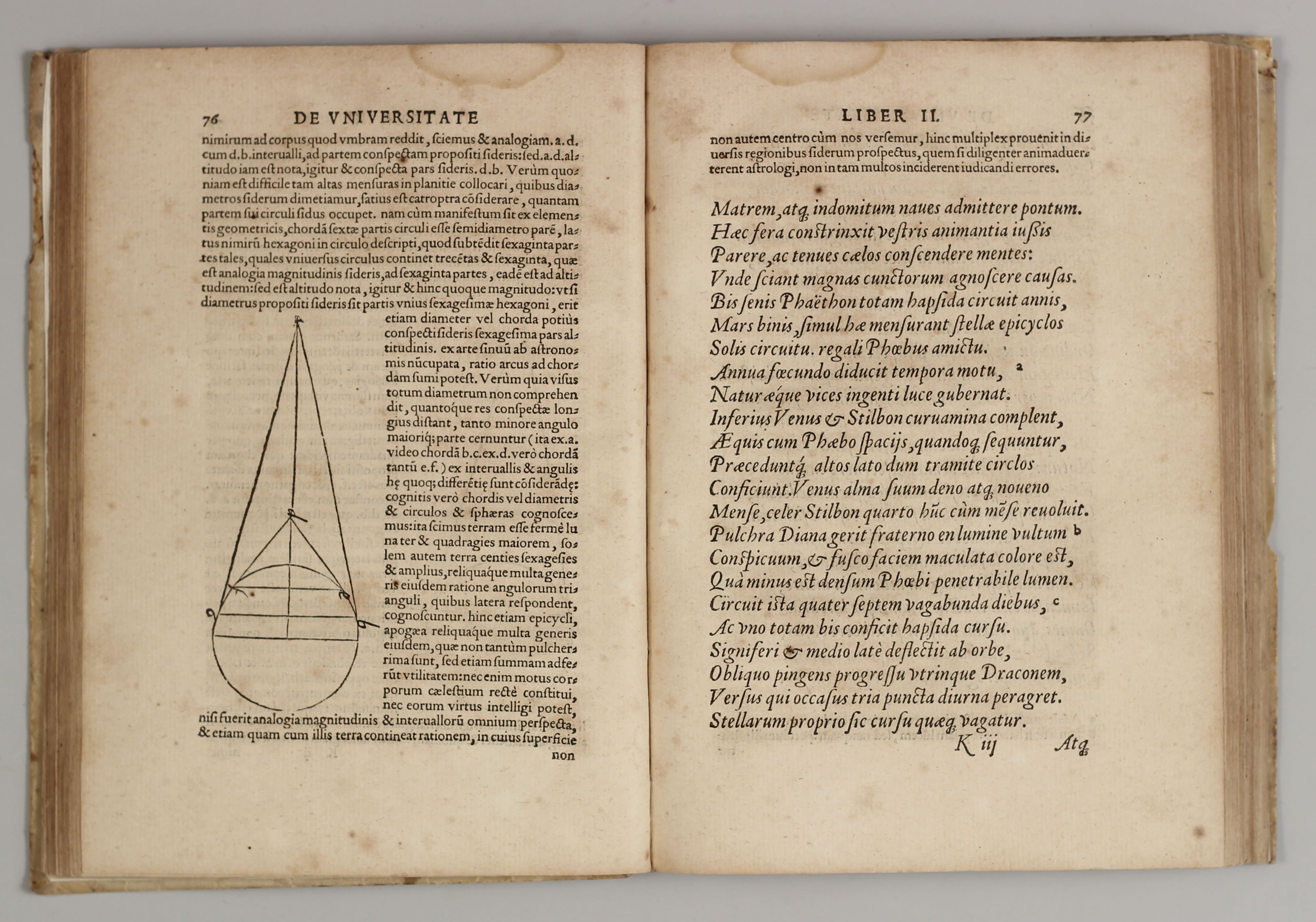Biesius, Nicolas
De universitate … — Antwerp 1556
De universitate libri tres, quibus universa de natura philosophia continetur. — Antwerpiae, Apud Martinum Nutium sub Ciconijs, M.D.LVI. [Antwerp, Nutius, 1556]
First edition
4to (198 x 140 mm). *4 A-Z Aa-Gg4: (4) leaves, 224 pp., (8) leaves. 1 folded table, woodcut diagramms. Little burn hole in leaf Tii. Contemporary limp vellum, paste-down and first endpaper new, the following endpapers are the original ones. One of these with ms. vita and bibliography from Bibliotheca Belgica by Valerius Andrea; some repairs to the binding. Foxed and stained. – Adams B 2035; Pettegree, Netherlandish books, no. 5103.
Nicolas Biesius (1516-1572) of Ghent, studied and taught medicine at Louvain university, became physician to Maximilian II at Vienna. For De universitate, i. e. the entire philosophy of nature, see Thorndike, A history of magic …, under the heading Natural philosophy and natural magic, vol. vi 394f.
For a more detailed analysis of its contents, and its sources – Macrobius, Lucretius, Ficino, Pico etc. – see L. Bakelants, Le „De universitate de Nicolas Biesius“, in: Hommage à Leon Herrmann, Bruxelles 1960, pp. 138ff. (Collection Latomus 44).
On an online note on G. Bruno’s De immenso etc. (Ffm. 1591) I found a surprising connection to Biesius in terms to the structure of both works: „The De immenso … is composed in the form of prosimetrum and exploits a combination of prose and verse parts. At the same time, unlike many other examples of the genre known since antiquity (see, for instance, Boethius‘ Consolatio or Bernardus Silvestrus‘ Cosmographia), Bruno’s writing has two important features. First, while Bruno’s prose Latin has a flavour of the philosophical language and, therefore, is not quite easy to catch due to its philosophical content, the verse Latin is extremely complex and presents a difficult challenge for both readers and potential editors of the text … The second feature is that prose parts do not necessarily comment on respective verse passages. The particular way to structure the material makes the De immenso a unique example of a single-book self-commentary in the Renaissance. In this respect, the only book that resembles Bruno’s writing in terms of its structure is Biesius‘ De universitate …“ For Biesius‘ self-commentary see the photo of pp. 42/43.
The folded table (Animae numeri … secundum Platonem) in book three of De universitate, which is dedicated to the human soul and the microcosm, shows as totum musicae συστήμα (p. 148) the mathematical structure of music (Pythagorean intervals) as well as of the human soul – and of the world soul, ψυχὴ κόσμου: „His igitur tribus rationum ordinibus animae natura pulcherrime contexitur secundum Platonem, & vario discrimine numerorum exornatur.“ (p. 149)





